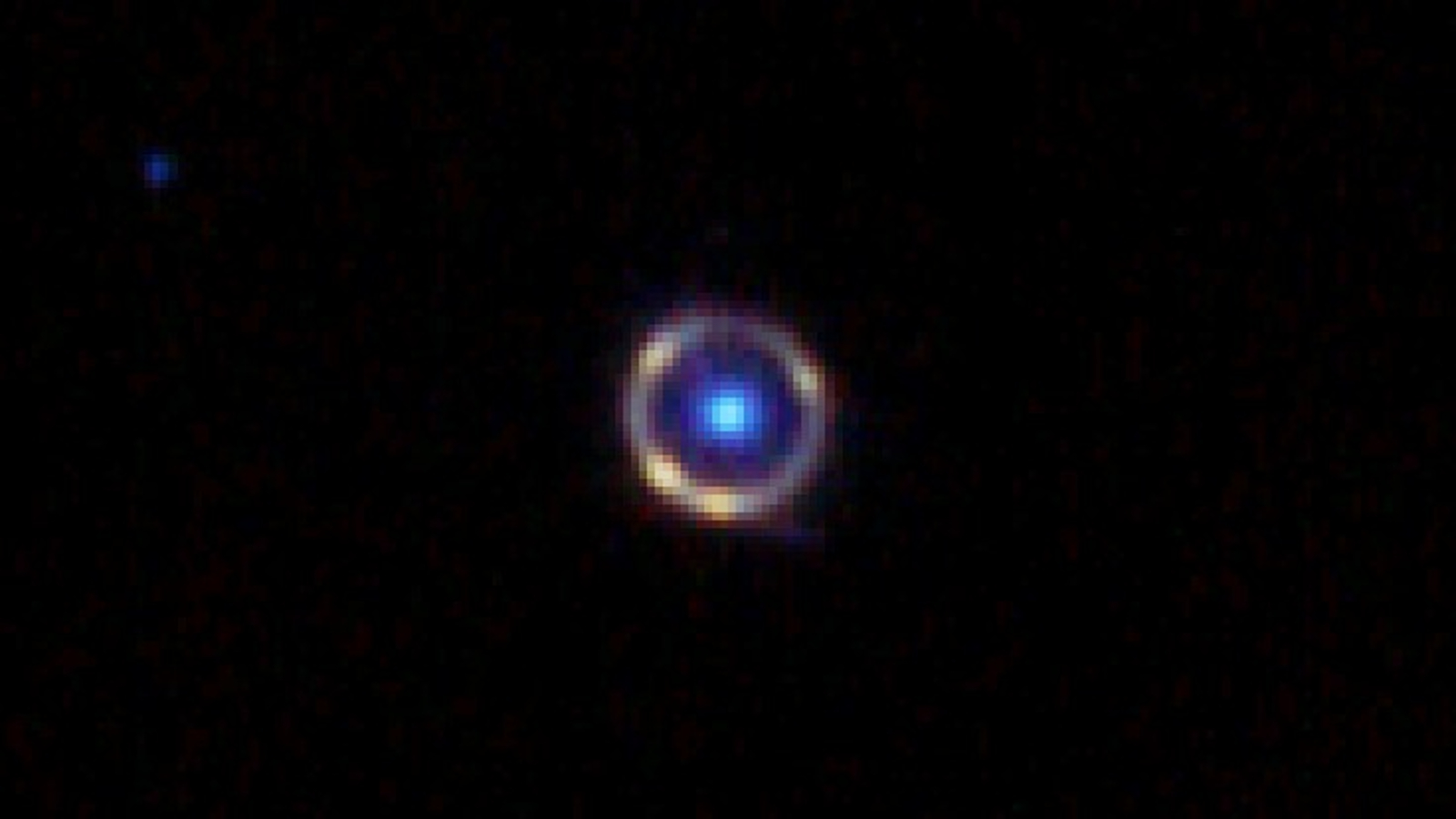Dark matter's secret identity could be hiding in distorted 'Einstein rings'
Researchers may be a step closer to identifying dark matter after studying unusual cases of gravitational lensing caused by "dark matter halos" surrounding distant galaxies.
Researchers may be one step closer to uncovering the true identity of dark matter after studying how light gets bent out of shape in weirdly warped Einstein rings and other gravitationally lensed objects.
Researchers estimate that dark matter makes up around 85% of the universe. But although experts have observed the gravitational effects of dark matter and mapped out where it could be, scientists still have no idea what it really is. This confusion is caused by the fact that dark matter does not emit light or any other form of electromagnetic radiation like ordinary, or baryonic, matter.
Since dark matter was first theorized in the late 19th century, scientists have made lots of suggestions about what dark matter could really be. However, the scientific community currently recognizes two hypothetical candidates as the most likely culprits: weakly interacting massive particles (WIMPs), which are predicted to behave much like other like particles; and axions, which are minute particles that likely behave like waves due to quantum interference. But despite years of experiments in particle accelerators, neither WIMPs nor axions have been discovered.
In a new study, published April 20 in the journal Nature Astronomy, researchers attempted to find out which dark matter candidate was most likely by analyzing several unusual gravitationally lensed objects — extremely far-away objects that are magnified when light they emit travels through gravitationally warped space-time surrounding a closer object.


Normally, gravitational lensing causes light from a distant object, like a galaxy or quasar, to appear to bend around a closer, equally massive object that is positioned between the distant object and an observer. The enormous mass of the foreground object, which can be a galaxy, quasar or black hole, creates an intense gravitational force that bends space-time around it; so rather than light bending around the foreground object, the light travels in a straight line through curved space-time. The result is a partial or complete ring of magnified light visible to the observer, which enables scientists to study the distant object in greater detail than is normally possible.
When the ring of light surrounding the foreground object forms a perfect, or close-to perfect, circle, it is known as an Einstein ring after Albert Einstein, who first predicted this phenomenon in 1912. In august 2022, the James Webb Space Telescope captured a stunning image of one of the most perfect Einstein rings ever seen.
However, some Einstein rings, as well as other non-ring lensed objects, can appear duplicated, where multiple images of the same lensed object are visible. Scientists believe these oddballs are created when space-time is further bent out of shape by "dark matter halos" — hypothetical rings of dark matter that surround certain galaxies but have never been directly detected.
Get the world’s most fascinating discoveries delivered straight to your inbox.
"By studying how the rings or other lensed images are distorted, astronomers can learn about the properties of the dark matter halo surrounding the closer [foreground] galaxy," Rossana Ruggeri, a cosmologist at the University of Queensland who was not involved with the study, wrote in an article about the study in The Conversation.
To do this, the researchers analyzed images of several oddly lensed objects, with a particular focus on HS 0810+2554, a quadruply lensed quasar that was first discovered in 2002. They then compared these images with two computer simulations — one in which the halo was made predominantly of particles, like WIMPs, and another where the halo had more wave-like characteristics, like axions. The team discovered that for every object, the images most closely matched the axion model.
"The result suggests axions are a more probable candidate for dark matter," Ruggeri said, which has left some scientists "buzzing with excitement." However, the debate is still far from settled, and follow-up studies are required to prove this theory, she added.
Axions and WIMPs aren't the only possible candidates for dark matter. Past research suggested that the invisible matter could also consist of neutrinos, gravitons or tiny black holes (also known as "Fermi balls"). Even more far-out studies suggest that dark matter could actually be made of dark matter interacting with itself in unknown extra dimensions.

Harry is a U.K.-based senior staff writer at Live Science. He studied marine biology at the University of Exeter before training to become a journalist. He covers a wide range of topics including space exploration, planetary science, space weather, climate change, animal behavior and paleontology. His recent work on the solar maximum won "best space submission" at the 2024 Aerospace Media Awards and was shortlisted in the "top scoop" category at the NCTJ Awards for Excellence in 2023. He also writes Live Science's weekly Earth from space series.




